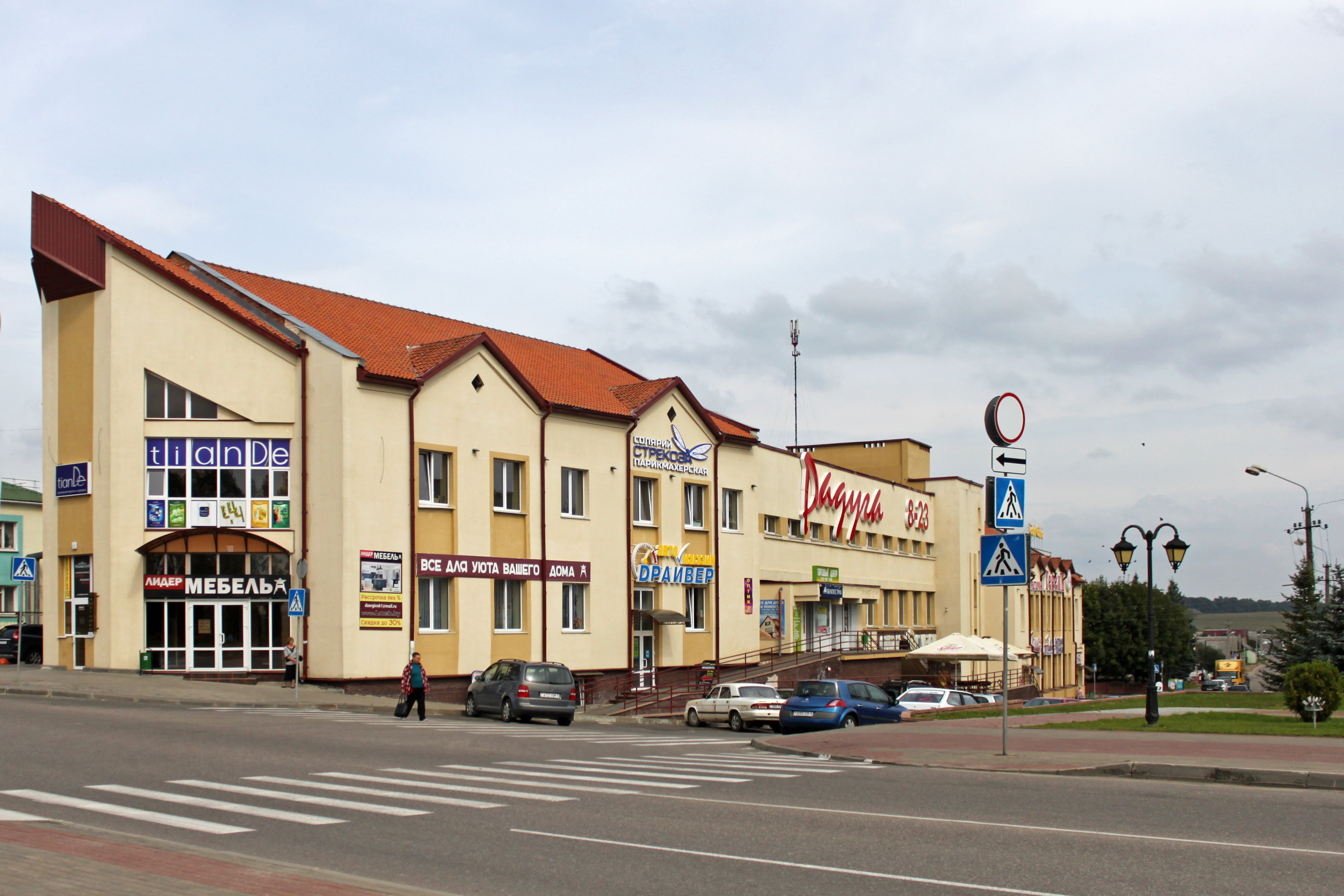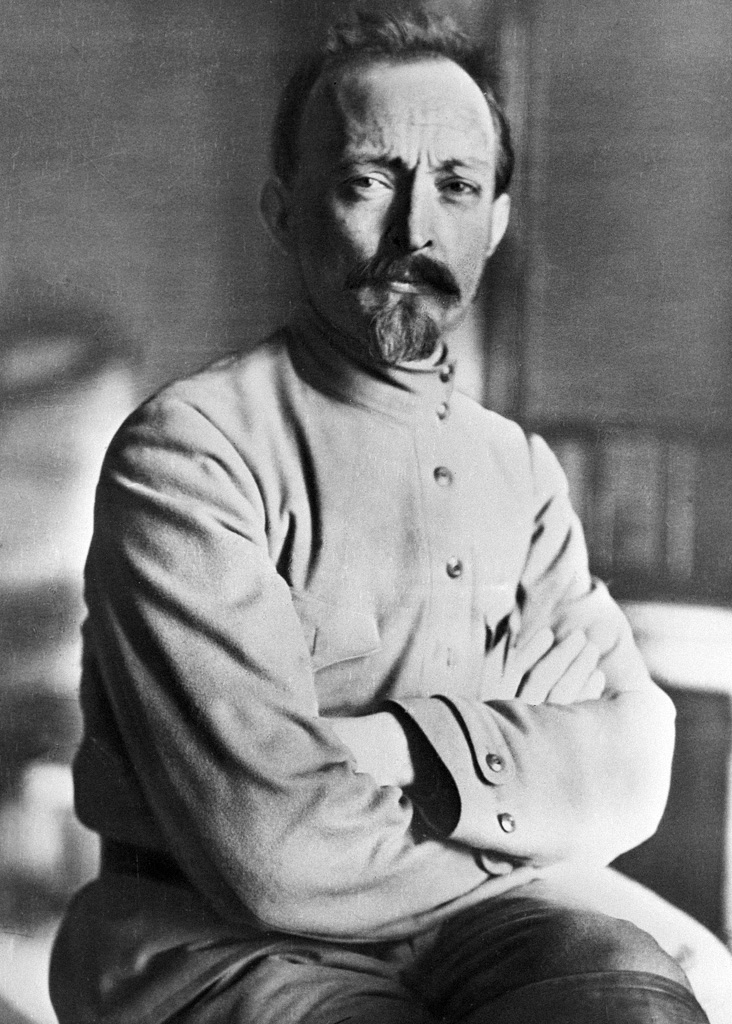|
Dzyarzhynsk
Dzyarzhynsk, or Dzerzhinsk, formerly known as Koydanava until 1932, is a town in Minsk Region, Belarus. It serves as the administrative center of Dzyarzhynsk District. As of 2025, it has a population of 29,630. History In the Middle Ages, the village belonged to the Radziwiłłs, a Polish–Lithuanian aristocratic family. Jewish community Jews lived in Koidanova as early as 1620. Koidanova became the site of a new Hasidic Jewish dynasty in 1833 when Rabbi Shlomo Chaim Perlow (1797–1862) became the first Koidanover Rebbe. He was succeeded by his son, Rabbi Boruch Mordechai Perlow (1818–1870), grandson, Rabbi Aharon Perlow (1839–1897), and great-grandson, Rabbi Yosef Perlow of Koidanov-Minsk (1854-1915), who was the last Koidanover Rebbe to live in the town. After World War I, the dynasty was moved to Baranovichi, then in Poland. In 1847, Koidanova had 2,497 Jewish inhabitants. In 1897, the city had a total population of 4,744, of whom 3,156 were Jews. Inter- ... [...More Info...] [...Related Items...] OR: [Wikipedia] [Google] [Baidu] |
Felix Dzerzhinsky
Felix Edmundovich Dzerzhinsky (; ; – 20 July 1926), nicknamed Iron Felix (), was a Soviet revolutionary and politician of Polish origin. From 1917 until his death in 1926, he led the first two Soviet secret police organizations, the Cheka and the OGPU, establishing state security organs for the Bolshevik government. He was a key architect of the Red Terror * * and de-Cossackization. Born to a Polish family of noble descent in their Ozhyemblovo Estate (in 1881 named Dzerzhinovo), in Russian Poland, Dzerzhinsky embraced revolutionary politics from a young age, and was active in the Social Democracy of the Kingdom of Poland and Lithuania party. Active in Kaunas and Warsaw, he was frequently arrested and underwent several exiles to Siberia, from which he escaped every time. He evaded the tsarist secret police, the Okhrana, whose work he took interest in. Dzerzhinsky participated in the failed 1905 Revolution, and after a final arrest in 1912, was imprisoned until the Febru ... [...More Info...] [...Related Items...] OR: [Wikipedia] [Google] [Baidu] |
List Of Cities And Towns In Belarus
This is a list of cities and towns in Belarus. Neither the Belarusian nor the Russian language makes a distinction between "city" and "town" as English does; the word ''horad'' ( ) or ''gorod'' ( ) is used for both. Overview Belarusian legislation uses a three-level hierarchy of town classifications. According to the Law under May 5, 1998, the categories of the most developed urban localities in Belarus are as follows: * ''capital'' — Minsk; * ''city of regional subordinance'' (; ) — urban locality with a population of not less than 50,000 people; it has its own body of self-government, known as ''Council of Deputies'' (; ) and an executive committee (; ), which stand on the level with these of a ''raion'' (). * ''city of district subordinance'' (; ) — urban locality with a population of more than 6,000 people; it may have its own body of self-government (; ) and an executive committee (; ), which belong to the same level as these of rural councils and of s.c. ''haradski p ... [...More Info...] [...Related Items...] OR: [Wikipedia] [Google] [Baidu] |
Koidanov (Hasidic Dynasty)
Koidanov (Yiddish: קאידנאוו) is a Hasidic dynasty originating from the city of Dzyarzhynsk (Koidanov), Belarus, where it was founded by Rabbi Shlomo Chaim Perlow (1797–1862) in 1833. Koidanov is a branch of both Lechovitch Hasidism and Karlin-Stolin Hasidism as Rabbi Shlomo Chaim Perlow was the paternal grandson of Rabbi Mordechai of Lechovitch and the maternal grandson of Rabbi Asher of Stolin. Koidanov was the smallest of the three Lithuanian Hasidic dynasties (Slonim and Karlin-Stolin), with most of its Hasidim being murdered in the Holocaust. The dynasty was re-established after the war in Tel Aviv, then moved to Bnei Brak, where the majority of the dynasty is located, but there are Chassidim located around the world. History Rabbi Shlomo Chaim was the son of Rabbi Aharon Jaffe of Lechovitch who died when Reb Shlomo Chaim was a young child. After which he was raised by both his grandparents, his father's father, Rabbi Mordechai Jaffe (ca. 1742–1810, founder ... [...More Info...] [...Related Items...] OR: [Wikipedia] [Google] [Baidu] |
Radziwiłł Family
The House of Radziwiłł (; ; ; ) is a Polish princely family of Lithuanian origin, and one of the most powerful magnate families originating from the Grand Duchy of Lithuania and later also prominent in the Crown of the Kingdom of Poland. Part of the representatives of the Radziwiłł family were known for their persistent and consistent struggle for the independence of the Grand Duchy of Lithuania and for their crucial role in preserving the Grand Duchy of Lithuania as a separate state in the 16th and 17th centuries. The family was founded by Radvila Astikas, but over time it split into many branches, such as the Biržai-Dubingiai and Goniądz-Meteliai lines. However, most of the branches became extinct by the 18th century, with only the Nesvizh-Kleck-Ołyka line surviving to this day. Their descendants were highly prominent for centuries, first in the Grand Duchy of Lithuania, later in the Polish–Lithuanian Commonwealth and the Kingdom of Prussia. The family produced man ... [...More Info...] [...Related Items...] OR: [Wikipedia] [Google] [Baidu] |
Belarus
Belarus, officially the Republic of Belarus, is a landlocked country in Eastern Europe. It is bordered by Russia to the east and northeast, Ukraine to the south, Poland to the west, and Lithuania and Latvia to the northwest. Belarus spans an area of with a population of . The country has a hemiboreal climate and is administratively divided into Regions of Belarus, six regions. Minsk is the capital and List of cities and largest towns in Belarus, largest city; it is administered separately as a city with special status. For most of the medieval period, the lands of modern-day Belarus was ruled by independent city-states such as the Principality of Polotsk. Around 1300 these lands came fully under the Grand Duchy of Lithuania and subsequently by the Polish–Lithuanian Commonwealth; this period lasted for 500 years until the Partitions of Poland, 1792-1795 partitions of Poland-Lithuania placed Belarus within the Belarusian history in the Russian Empire, Russian Empire for the fi ... [...More Info...] [...Related Items...] OR: [Wikipedia] [Google] [Baidu] |
Aharon Perlow Of Koidanov
Aharon Perlow (; 1839 – 1897) was the third Rebbe of the Koidanov Hasidic dynasty. He was a charismatic leader who attracted thousands of followers and effected a revival of the Koidanover dynasty founded by his grandfather, Rabbi Shlomo Chaim Perlow (1797-1862). He authored several important works that became standard texts for Koidanover Hasidim to this day, including a siddur, ''Seder Tefilot Yisrael Or Hayashar'' ("The Direct Light: Order of Prayers of Israel"). Biography Perlow was born in Koidanov (present-day Dzyarzhynsk, Belarus) to Rabbi Baruch Mordechai Perlow (1818–1870), the second Koidanover Rebbe. He was the great-great-grandson of both Rabbi Mordechai of Lyakhavichy (Lechovitch) (c. 1742–1810) and Rabbi Asher Perlow of Karlin. Before acceding to the leadership of the Koidanover Hasidim, he was the Rav of the Koidanover shtiebel in Lechovitch. He pioneered the opening of prayer houses in different towns that followed the teachings of the Rebbes of Lecho ... [...More Info...] [...Related Items...] OR: [Wikipedia] [Google] [Baidu] |
Districts Of Belarus
A district or raion (, , ''rayony''; , , ''rajony'')According to thInstruction on Latin Transliteration of Geographical Names of the Republic of Belarus, Decree of the State Committee on Land Resources, Surveying and Cartography of the Republic of Belarus dated 23.11.2000 No. 15recommended for use by the Working Group on Romanization of Belarusian, Romanization Systems of the United Nations Group of Experts on Geographical Names (UNGEGN) — . See also: Instruction on transliteration of Belarusian geographical names with letters of Latin script; Romanization of Belarusian. in Belarus is the second-level administrative division in the country which are subordinate to regions of Belarus, regions (also known as oblasts). List of districts Brest region Gomel region Grodno region Minsk region Mogilev region Vitebsk region See also *Regions of Belarus, 1st level subdivision *Rural councils of Belarus, 3rd level subdivision References External links {{Articles on se ... [...More Info...] [...Related Items...] OR: [Wikipedia] [Google] [Baidu] |
List Of Hasidic Dynasties
A Hasidic dynasty or Chassidic dynasty is a dynasty led by Hasidic Jewish spiritual leaders known as rebbes, and usually has some or all of the following characteristics: * Each leader of the dynasty is referred to as an ''ADMOR'' (abbreviation for '' ADoneinu MOreinu VeRabeinu'' – "our master, our teacher, and our rabbi"), or simply as '' Rebbe'' (or "the Rebbe"), and at times called the "Rav" ("rabbi"), and sometimes referred to in English as a "Grand Rabbi"; * The dynasty continues beyond the initial leader's lifetime by succession (usually by a family descendant); * The dynasty is usually named after a key town in Eastern Europe where the founder may have been born or lived, and sometimes, such as in the case of the Bostoner Chassidim, where the group began to grow and flourish or where a significantly influential Jewish teacher founds a court or yeshiva where students go to learn from, or consult with, that Rebbe; * The dynasty has (or once had) followers who, through tim ... [...More Info...] [...Related Items...] OR: [Wikipedia] [Google] [Baidu] |
Polish Autonomous District
Polish National Districts (called in Russian "полрайоны", ''polrajony'', an abbreviation for "польские национальные районы", "Polish national raions") were national districts of the Soviet Union in the interbellum period providing national autonomy for Polish minorities in the Ukrainian and Byelorussian Soviet Socialist Republics of the USSR. They were created in an attempt to live up to the postulate of Leninism about the rights of nations for self-determination. Also, creation of these regions served one of purposes of the Bolsheviks to export the revolution since after their defeat in the Polish-Soviet War, the Soviets did not give up their idea of creating a Soviet Republic in Poland. Polish National Districts were supposed to be the origin of future Soviet Poland. [...More Info...] [...Related Items...] OR: [Wikipedia] [Google] [Baidu] |
Dzierzynszczyzna
Polish National Districts (called in Russian "полрайоны", ''polrajony'', an abbreviation for "польские национальные районы", "Polish national raions") were national districts of the Soviet Union in the interbellum period providing national autonomy for Polish minorities in the Ukrainian and Byelorussian Soviet Socialist Republics of the USSR. They were created in an attempt to live up to the postulate of Leninism about the rights of nations for self-determination. Also, creation of these regions served one of purposes of the Bolsheviks to export the revolution since after their defeat in the Polish-Soviet War, the Soviets did not give up their idea of creating a Soviet Republic in Poland. Polish National Districts were supposed to be the origin of future Soviet Poland. [...More Info...] [...Related Items...] OR: [Wikipedia] [Google] [Baidu] |






